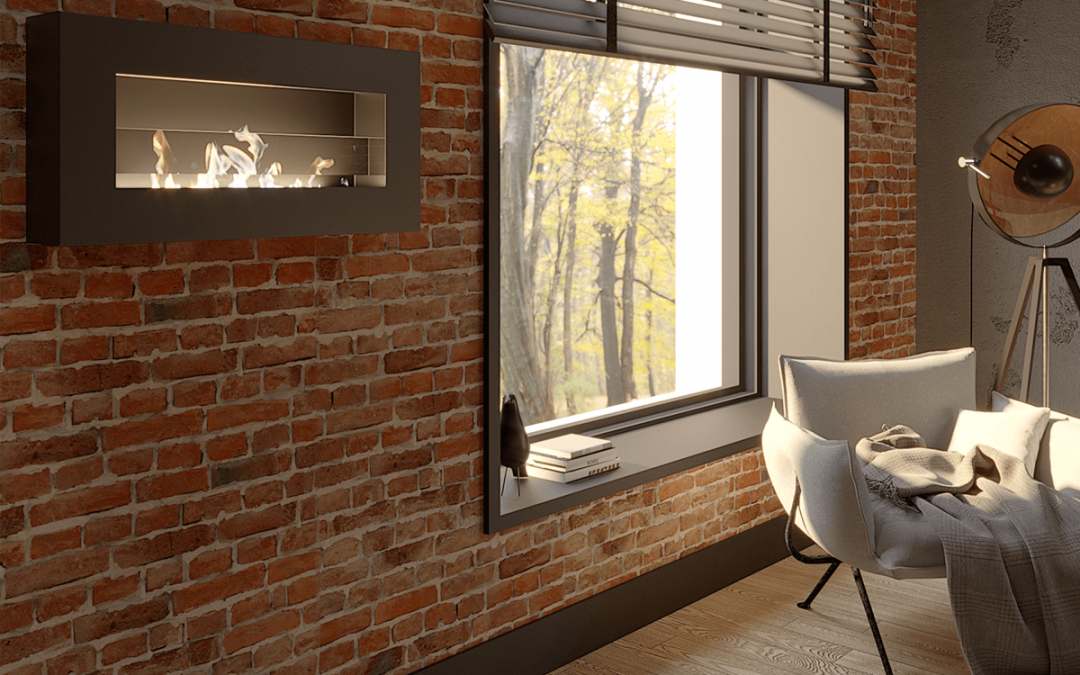Bio-fireplaces are an innovative solution in the field of interior decoration and heating. They are becoming more and more popular due to their modern design and environmental friendliness. We have prepared a short article for you in which we explain how a bio-fireplace works, whether it needs a chimney to discharge exhaust gases and whether it is definitely safe for health. If you are planning such a solution in your house or apartment, our tips will dispel your last doubts and help you make a decision.

What is a bio-fireplace and how does it work?
A bio-fireplace is a device used to generate fire and heat using biofuel. It is a type of fireplace that does not require connection to a gas or electricity installation. Unlike traditional models that are fired with wood or gas, bio-fireplaces are powered by biofuel, which is usually in the form of a liquid or gel based on ethyl alcohol.
How does a bio-fireplace work? The principles of its operation are simple. Biofuel is placed in the fireplace tank and then ignited using a burner specially adapted for this purpose. Biofuel burns and the flames can usually be observed through glass - they create the effect of a bonfire, especially if we supplement them with ceramic logs. The heat generated during the combustion of biofuel is immediately emitted into the room.
When describing how bio-fireplaces work, it is also necessary to mention their extinguishing. Usually, for this purpose, the air supply to the combustion chamber is cut off by closing a special valve. Then the flame immediately goes out. You can also wait until all the fuel has burned out.
It is worth emphasizing thatbio fireplaces They serve primarily as an element of interior decoration, creating a cozy atmosphere. Their thermal power is usually low - they can complement the heating system, but they will not work as the main heat source. However, they are perfect for creating a relaxing atmosphere in the living room, bedroom or dining room.
Do you need a chimney for a bio-fireplace?
One of the advantages of bio-fireplaces is their extraordinary versatility and ease of installation. They will work well in places where it is impossible to install e.g. traditional wood-burning fireplaces - in bedrooms, on terraces and in apartments.
You're probably wondering whether you need a chimney for a bio-fireplace. The answer is no! A bio-fireplace can be installed in any room without the need to build a chimney. Its operation is based on the combustion of biofuel, which does not emit smoke or harmful substances, therefore there is no need for a special installation to discharge exhaust gases outside. All you need to do is place the bio-fireplace in a well-ventilated room.
Is a bio-fireplace harmful to health?
One of the main concerns about bio-ethanol fireplaces is the potential harm to health. The biofuels used are usually ethanol or methanol, which is converted into carbon dioxide and water vapor when burned. Unlike traditional wood fireplaces, bio-fireplaces do not produce smoke or tar, which may pose a health hazard.
The answer to the question whether a bio-fireplace is harmful is therefore negative. Remember, however, that you should be careful and follow the manufacturer's recommendations regarding the use of biofuels. Regardless of which biofuel you choose, it is important to properly ventilate the room to avoid carbon dioxide build-up. It is also worth using good quality biofuels from a proven source.
Is a bio-fireplace safe?
Now that you know what a bio-fireplace is and how it works, questions may arise as to whether such an element of home or apartment equipment poses a threat to your safety. After all, we are dealing here with a fire in enclosed spaces. Whether a bio-fireplace is safe depends primarily on the quality of workmanship of such a device and compliance with the manufacturer's instructions. If you choose a good product from a reputable brand and then use it in accordance with the rules, you do not have to worry that any dangerous incidents will occur.

